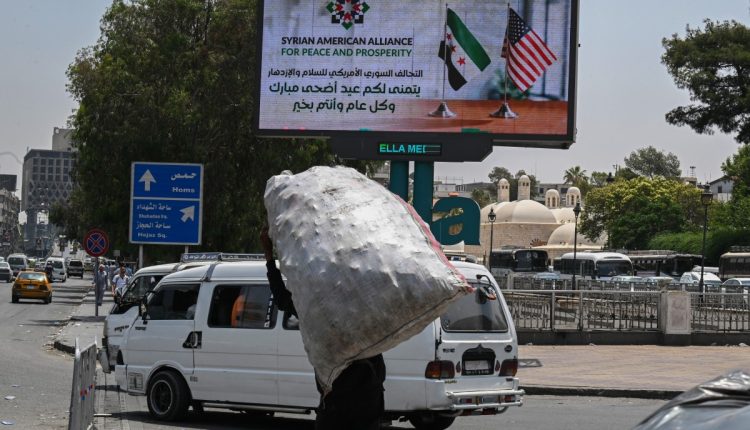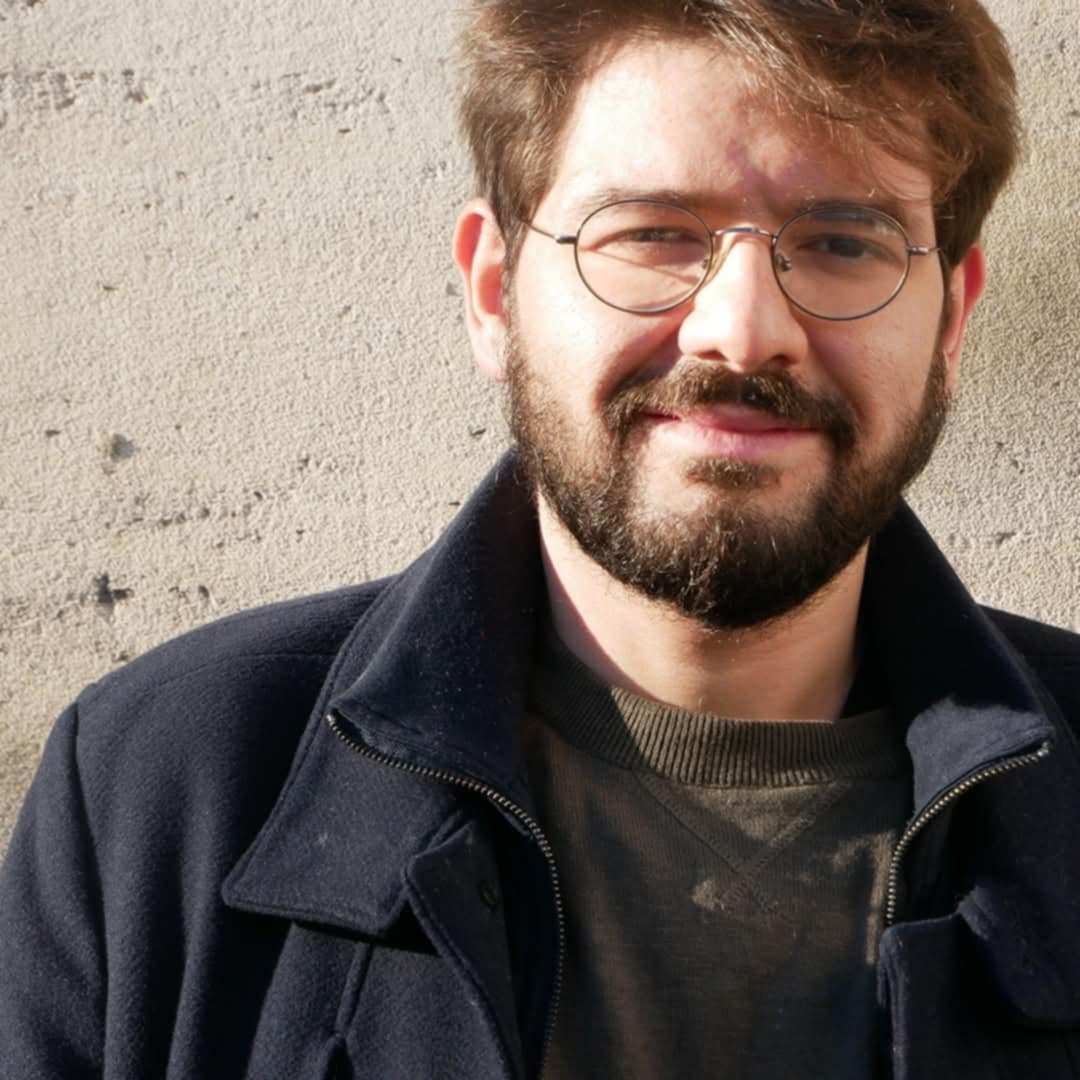The Syrian Ideology: Is it Possible for the ‘Revolution’ to Create a Foundation Myth?
By Mohammad Sami Al-Kayal
Every state, regardless of its character and political system, needs a founding myth, not only to ensure the survival of those in power but also to produce a unifying narrative for the diverse population blocks it encompasses within its borders. These blocks are often spread across multiple locations, interests, and cultures. Such a myth provides a clear sense of the collective self, its position in the world and history, and its relationship with others. Without this concept, it becomes impossible to achieve social integration, establish a political and constitutional framework, or legitimize authority and organized violence. It also becomes impossible to maintain a minimum level of civil peace and secure communication channels in the public sphere.
Furthermore, contemporary states are highly intrusive into the lives of their citizens and are always engaged in bio-politics related to intimate bodily affairs, such as health, living standards, births, deaths, family, and morality. All these policies are connected to the state’s narrative of ‘the people,’ their core values, and their fundamental goals.
‘Myth’ is not merely a falsehood or a lie spread by the authorities among people; rather, it is an organized normative narrative that produces collective meaning through essential storytelling processes such as selecting historical and cultural facts, condensing, amplifying, exaggerating, trivializing, and creating symbols. It is not inherently precise or scientific, but it is indispensable. There are no human societies without foundational myths. Often, the ideology of the foundational myth lurks within the subconscious of historians and researchers themselves, serving as a guiding principle, a comprehensive intellectual model through which reality and history are interpreted, until they rebel against it, often driven by social and political motives. Thus, waves of revisionism, critical historiography, and reformist approaches emerge, which may ultimately enrich and expand the foundational myth rather than destroy it, especially if the functions of social integration operate effectively.
Another characteristic of the foundational myth is that it necessarily contains an exclusionary element. Collective self-identification can only be established through the presence of an Other—often a rival or enemy, or an antithesis to the values that maintain the cohesion of the group. This Other is not only external but also within the nation itself. A coherent narrative that organizes a series of social, economic, and ideological relations cannot fully acknowledge all perspectives, cultures, practices, lifestyles, and modes of work and life; otherwise, it would lose its coherence and meaning.
Dissenters and critics must conform to the founding narrative, or they will be considered as phenomena hostile to the social and national fabric—necessitating treatment, monitoring, or even removal. These various therapeutic, censoring, and erasing practices form the core techniques of any authority. They are productive, not just violent or lethal. After all, a significant part of our selves is the product of a set of authoritarian practices that we are subjected to within various institutions, designed to integrate us into a social fabric that has legal and ideological dimensions.
Syria experienced all of this through successive colonial and local regimes that accumulated many layers of ideology, discourses, and authoritarian practices. However, the most influential force shaping what we now refer to as the ‘Syrian ideology’ is Assadism, which has reconfigured key elements of the founding myth of the Syrian state through various institutions, discourses, tools, and practices. An important aspect of our collective selves remains Assadist, even if the Assad regime falls. Deconstructing this aspect is extremely complex. An Assadist is not merely someone who cheered for Assad or is waiting for his return.
Currently, many talk about ‘state-building’ in a post-Assad Syria by HTS (Hayat Tahrir al-Sham), its allies, and their presumed social base. The founding myth of this new state is likely to be the ‘Syrian Revolution’ against Assad. But is this ‘revolution’ capable of producing discourses that foster a collective Syrian identity through a series of institutions and practices? Can it truly transcend Assadism?
Assadism: The Forced Majority
Far from the meaningless sociological and historical debate about the ‘Alawiya’ of the Assad regime, at no point in its history did that regime present an explicitly declared sectarian ideological narrative, whether openly or subtly. Instead, it constructed its own national space based on ideologies that were highly popular at the time of its founding and maintained their influence relatively strongly until its fall. These included Arab nationalism, anti-colonialism, anti-Zionism, and the Palestinian cause. Many of Assad’s most fierce opponents—excluding the Islamist spectrum close to the Fighting Vanguard—did not depart from these ideologies. Rather, they raised against the regime because they saw it as hypocritical, negligent, or ineffectual in defending them. Even accusations of sectarianism often arose within the same context. The ‘Alawite regime’ cannot truly be considered Arab or genuinely committed to liberating Palestine.
Assadism built its base through a broad social coalition that encompassed diverse groups. This does not mean that these groups were equal, but rather that they were positioned within a certain hierarchy of loyalty and dependency. Each group had its own clique and role within the existing regime. Assadism also implemented social, educational, and vital policies through various forms of economic support, linking them to the state apparatus and its security and military forces. Additionally, a set of ideological institutions connected to the Baath Party remained highly influential until the 1990s. Naturally, Assadism was characterized by numerous and intense patterns of exclusion and elimination. In addition to the Kurdish people—who would inevitably be excluded by this nationalist ideology—everyone from schools to military barracks and security detention centers was expected to become Assadist Baathist Arabs.
Rebellion against this would be met with a ‘sovereign right’ of the state and its patriotism, which amounted to systematic killing under torture and mass slaughter. Assad’s sovereignty was manifested in a permanent state of exception, whose main codification was the Emergency Law, which predated the Assad regime itself. It was only lifted in 2011 to be replaced by a complex series of exceptional laws in the field of ‘counter-terrorism.’
All of these economic, ideological, violent, and deadly practices produced the contemporary Syrian national community—namely, the ‘people’ of Assad, with their mass culture and self-concepts. It must be emphasized that Assadism was not founded on violence alone. No political system can be established and stabilized solely on the violence of a ruling clique. Rather, violence was a prominent component of various measures, discourses, and institutions that established a political and social majority to which everyone had to belong, either voluntarily or forcibly—or, more accurately, voluntarily and compulsorily, as Syrian civil servants used to joke about the ‘mandatory voluntary work’ day that Assad Sr. sometimes imposed on official holidays.
In any case, Assadism succeeded in fulfilling the minimum social and political functions, enabling it to survive for nearly half a century. Since the 1990s, economic and ideological changes, along with the shifting nature of its dominant cliques, played a crucial role in disrupting its ability to integrate and sustain its social coalitions. At this point, violence no longer sufficed, and despite its military victory over opponents, it ultimately fell.
However, the fall of Assadism as a regime and the disintegration of its people do not mean that it has completely dissipated. It left behind a substantial reservoir of authoritarian discourses and practices, elements of which can always be repurposed—even if they are fragmented and have lost their structural coherence. It remains that the “Syrian people,” formerly the people of Assad, no longer possess any concept of a collective identity. It is legitimate to question their ability to break free from Assadism, especially since the most prominent candidate to replace it is the “Syrian revolution against Assad.”
‘Revolution’: The Narrow Majority
There is no radical social revolution that has not involved violence or committed violations amounting to crimes against humanity, according to current standards of international humanitarian law. Nor is the characterization of ‘civil war’ necessarily incompatible with the concept of ‘revolution’. Every major revolution has, at least in part, been a civil war. However, this concept may not apply to the ‘Syrian Revolution’. Not because of its violence or sectarian nature, but because it did not aim for—or result in—a radical transformation of social relations that would pave the way for the rise of heterogeneous groups capable of producing their own alternatives and building their own systems and coalitions. The ‘revolution’ appears to be nothing more than the violent and chaotic disintegration of Assadism itself, coupled with the rapid decline of Syrian societies toward de-urbanization. Furthermore, the main currents within the ‘revolution’ have not produced any ideas over fourteen years beyond broad slogans about “freedom” and perhaps “democratic transition” (which is now rarely mentioned). In practice, these slogans have only been translated into two phrases: ‘majority rule’ and ‘Sunni grievances’.
‘Majority’ in the first phrase, like ‘Sunni’ in the second, are merely two political terms that are accepted intuitively as if they are naturally existing: there is a ‘majority’ with a complete essence, and its choices and inclinations are inevitably derived from its identity, of which ‘grievance’ is an essential aspect. ‘Governing’ this majority simply means having one of their own in power.
There is no point in discussing such arguments. Political majorities are not built so simply, even if they are based on religious or sectarian foundations. It is necessary to establish a coalition of multiple groups, positions, and interests capable of achieving internal cohesion and integration under the religious or sectarian banner. This requires political and institutional action and a minimum level of participation in power, even if undemocratic, along with a certain distribution of resources that provides some economic support for basic activities and social welfare. There are still no signs of the establishment of this type of majority.
The tendency of the ruling militia groups to monopolize power, appoint along sectarian lines, insist on particular regional ties, and emphasize religious militancy is likely to ‘reduce’ the sectarian majority, transforming it into a collection of discordant minorities that cannot identify with the ‘majority image’ imposed by the regime. This image is too narrow to even include many of its supposed members. It may be possible to rally some Sunni communities by portraying ‘minorities’ as an internal enemy responsible for all failures, problems, and internal contradictions of the ‘majority,’ and as ‘remnants’ that must be defeated and mobilized against. But for how long?
Perhaps the real question is this: can the notions of ‘majority rule’ and ‘Sunni grievances’ associated with the ‘Syrian Revolution’ create a founding myth for Syria comparable even to Assadism? It seems strange to imagine a ‘people’ built on a ‘Sunni Syria’ and sects on its margins, whose members believe in Sunni Arab superiority and seek integration into a ‘homeland’ whose only external enemies are extensions of non-Sunni sects in neighboring countries. This approach is unlikely to succeed and may only serve as a recipe for civil wars and ongoing social unrest.
We may be facing nothing more than a deformed and incapacitated form of Assadism. The ‘Syrian Arab Republic’ persists and takes pride in its Umayyad sword and its claims to imperial history. The Baathist elites, the ‘leaders of the state and society,’ have become ‘legitimate authorities and princes’ present in all remaining institutions. The dominant military and security apparatus now originate from rural areas different from those of the previous Assadist factions. Likewise, the networks of cronies and influential figures are now linked to the militias that appointed the ‘president’.
However, all of this is underpinned by a narrative that fails to convince. In fact, many harbor a deep resentment against it, amid unprecedented social disintegration, inherited decay, and the disappearance of most of the remaining Syrian bureaucracy.
The future of this structure is unpredictable, and the potential scenarios are far from optimistic. It is more prudent to move beyond the conceptualizations and narratives of the ‘revolution,’ which tend to be fragmented and incapable of providing a convincing or coherent Syrian story. Instead, we should think in terms of avoiding the tragedy that a distorted Assadism might lead us to. This can only be achieved by transcending the ‘Syrian Arab Republic,’ with its Baathist and Islamist versions, its pattern of exclusionary nationalism, and its narrow, imposed majoritarism, and by considering another Syria capable of bringing together this exhausting social fragmentation.




Comments are closed.